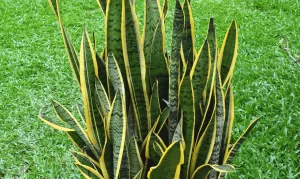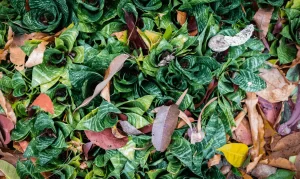How to propagate a Snake Plant: Four Simple Methods: Snake plants bring the visions of Medusa to our mind and are also known as mother-in-law’s tongue. Snake plants feature sword-shaped leaves; the leaves are smooth and almost waxy. The simple character of snake plant care makes it flawless and increases your house’s beauty. The plants are ideal for a new gardener, as they flourish in negligence. Learn how to propagate snake plants so you can share this wonderful and handy houseplant.
Contents
Basic Care for Snake Plant
The snake plant is flexible about lights and moisture, but it is sensitive about the quantity of water it receives. The only thing that might kill a mother-in-law’s tongue is overwatering. It can propagate in small jars with jam-packed rhizomes and has few nuisances or disease complications.
It is not essential to add fertilizer, but if you feel like doing something pleasant for the plant, just incorporate a half dilution of houseplant nutrients once a month during the rising season. These precious plants purify the air and improve the home with tropical beauty. Feast the love by propagating snake plants and share it with your friends and neighbors as a special treat.
How to Propagate Snake Plant?
Learning how to grow snake plants is very simple. Overwatering can indeed kill your plant, but rooting a snake plant in water is amongst the most foolproof procedures. You can also root the snake plant from the cuttings, but the speediest way to obtain a new snake plant is to divide it. The plant tends to grow outwards from rhizomes which form mass together and reproduce as the plant gets older. This technique is not different from the one you normally use to propagate other plants in the garden. You can pick any technique of snake plant propagation.
How to Root Snake Plant in Water?
It is also possible to root snake plant cuttings inside the water. It can be somewhat riskier, but you can still try.
- You will require a much lengthier cutting to grow snake plants in water. Collect a 4-5″ in. long section from the tip of the leaf. Just the same you would do for a soil-based propagation procedure, permit the cut edge to heal and repair for a day or two.
- When it is ready, take about an inch of fresh, room-temperature water into a pot or glass. Make sure it is tall enough to support your cutting without dropping out. Now add your cutting, ensure that the cut end is inside the water.
- Replace the water in your pot two times a day. To prevent the growth of algae inside the container, clean the vessel once a week. Place your cutting in a site with bright, and avoid indirect lights.
- Once the roots appear at the base of the cutting, permit them to spread at least two inches long. You can then move into the dampened potting mix.
Read more about How to Propagate Basil Plant from Cuttings?
The major disadvantage of this technique is that the cutting can start to rot. You have to keep most of the cutting out of the water, only allowing the lower part to emerge in the liquid.
How to Grow the Snake Plant from Cuttings
This technique is no different from the water method, but it omits a step. Let the cut leaf callus over for each day or two, then insert the cut end into lightly moist sand inside a container. Please wait for a few; therefore, the plant will root on its own.
Dividing Snake Plant
Over time, snake plants can become root-bound or too strongly packed into their presented space. This is often when many of us prefer to repot snake plants.
- Just start by removing your snake plant from its container. Examine the basis tangle. Does it spiral around the pot, intertwining with other roots? If so, it’s a perfect time to divide your plant.
- Examine the plant properly. Then start to divide it into sections that might look good when potted separately.
- Wrap your fingers around the base or bases of the clump you would like to separate, and gently tug it far away from the most mass. You’re not trying to tear the roots but to separate as many as you can. Once you’ve got it mostly separated, use a sterilized knife to chop through the remainder
- You can now plant that segment into a prepared potting mix at an equivalent height it had been planted before. If it had been a bigger plant, the leaves might have touch support while they get established in their new location. A wooden stake or two should provide many supports.
Read more about Beginners Guide How to Propagate Pothos.
The advantage of division is that even cultivars that won’t propagate well via leaf cuttings will stay true using division. After all, you’re not taking just a bit of a plant, but a whole smaller plant itself. this suggests that if you’ve got unusual cultivars, this is often your best method for propagating those.
How to Propagate snake Plants from Seeds?
Sure, it is possible to grow snake plants from seed, but is it worthwhile?
In most cases, the answer is simply “No”. Seeds are commonly unreliable at germination rates. Many snake plant seeds tend to possess very low germination rates at best. It is possible to grow a plant to start, hen a division of cuttings would be if you need more plant sitter.
Learn more How to Care for a Money Tree?
If you are planning to start growing plants from seed, make sure to obtain your seeds from a reliable seed supplier. It’s going to cost you a little more, but you will have a far better chance of germination with a longtime seed company. Seeds through individual sellers might not be harvested correctly. Worse, there are tons of seed scams out there. Those seeds won’t germinate in the least, leading to tons of wasted time and money!
Final Thought: How to Propagate Snake Plant?
Hopefully, now you know how to propagate a snake plant. If you are determined, then simply just follow these techniques to root a snake plant in your garden.




